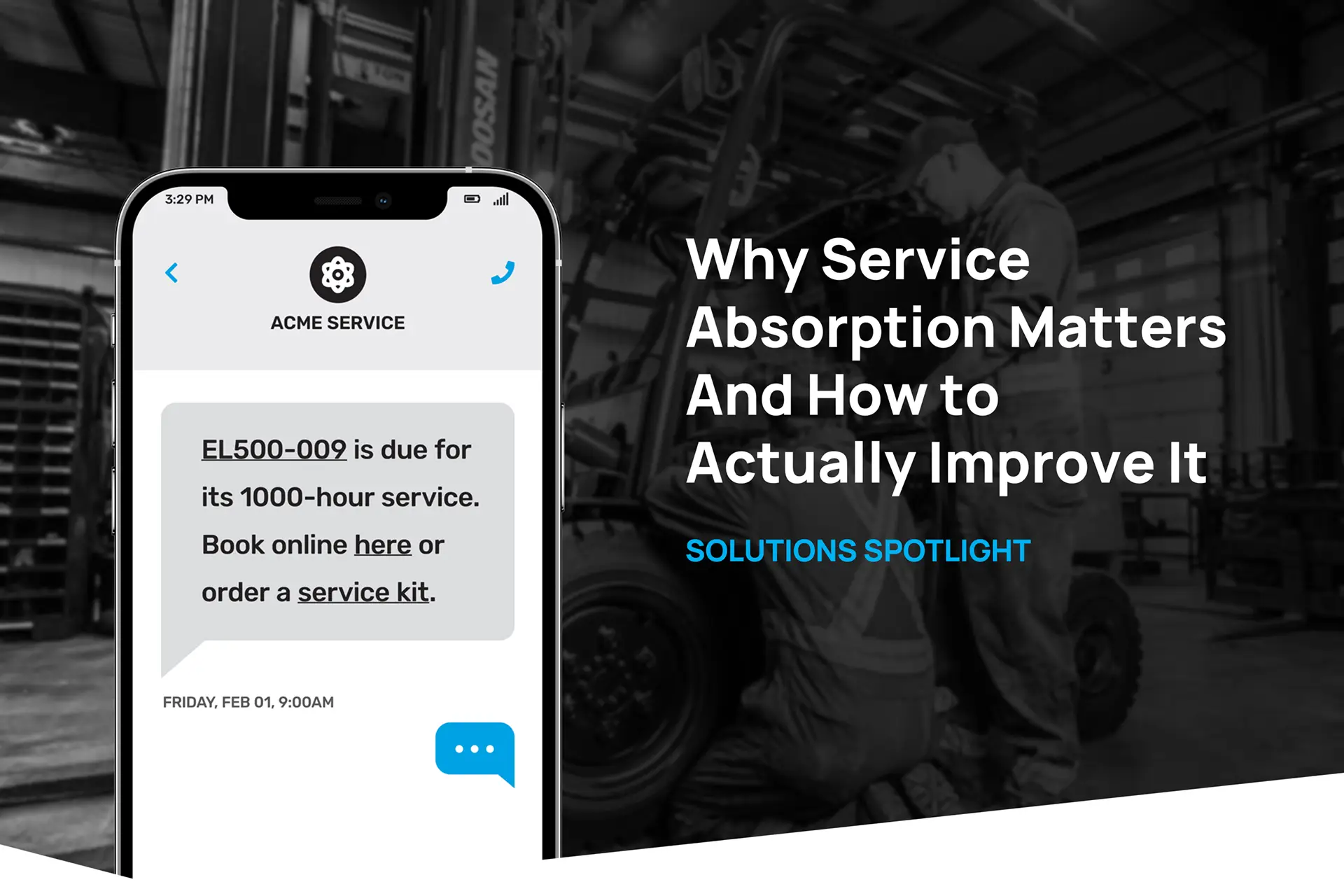Why Service Absorption Matters—And How to Actually Improve It
Reframing absorption with actionable, data-backed strategies.
In today’s dealership landscape, margins on equipment sales are tighter than ever. That’s why service absorption — the percentage of fixed operating expenses covered by parts and service revenue — is a key financial metric for long-term dealership sustainability. But it’s more than just a number. When used strategically, service absorption can become a powerful lever to improve profitability, customer retention, and resilience across market cycles.
In this article, we’ll break down why service absorption matters, how it relates to the overall health of a dealership, and the practical steps dealers can take to improve it using real-time data, automation, and smarter asset insights.
What Is the Service Absorption Ratio?
The Service Absorption Ratio is typically calculated as:
(Parts + Service + Workshop Gross Profit) ÷ Total Dealership Operating Expenses
It answers a critical question: If equipment sales stopped tomorrow, how much of your dealership’s expenses would still be covered by your fixed ops?
A ratio of 100%+ means the dealership could theoretically operate without relying on new or used equipment sales to cover its overhead.
A ratio below 70% often signals risk — underutilized service bays, missed parts sales, or operational inefficiencies.
It’s a core KPI for dealership health, used by CFOs, dealer principals, and OEMs alike to benchmark performance, identify gaps, and prioritize investments.
Why It Matters Now More Than Ever
Sales Volatility: Equipment sales are cyclical. Service and parts provide a steadier revenue base.
Customer Lifetime Value: Service touchpoints increase retention, upsell opportunities, and aftermarket engagement.
OEM Expectations: Many OEMs now reward dealers who drive aftersales excellence — especially for connected equipment and uptime guarantees.
Margin Pressure: Absorption helps offset lower margins on machinery by maximizing recurring revenue.
The Problem: Why Many Dealerships Struggle to Improve Absorption
Poor visibility of equipment location, usage, and maintenance needs
Disconnected systems between sales, service, and inventory
Reactive service models instead of preventative or predictive
Lack of automation in reminders, scheduling, and workflow management
Limited insights on service profitability by customer or asset type
How to Actually Improve Service Absorption: A Data-Driven Playbook
Track Utilisation and Health of Customer Equipment
Use IoT and GPS telemetry to monitor equipment uptime, usage hours, and faults.
Identify under-serviced machines and generate proactive service leads.
Automate Preventative Maintenance Schedules
Set recurring schedules based on hours, mileage, or time intervals.
Trigger auto-reminders and follow-up workflows via email or mobile alerts.
Connect QR Codes and Asset Tags to Service Histories
Let operators scan and book servicing instantly.
Reduce friction in capturing service needs in the field.
Identify Gaps in Service Penetration
Use dashboards to compare sold units vs. serviced units by customer, branch, or asset type.
Target non-returning customers with tailored service campaigns.
Offer Service Contracts and Extended Warranty Plans
Bundle service into financing or lease agreements.
Increase recurring revenue and lock in long-term relationships.
Measure Profitability Per Job and Technician
Integrate time-tracking and job codes into your service workflows.
Highlight inefficiencies and coach underperformers.
Digitize Workflows for Faster Turnaround
Replace paper forms and manual logging with mobile checklists, inspections, and approvals.
Reduce billing delays and improve technician productivity.
Conclusion: From KPI to Competitive Advantage
When fully embraced, the service absorption ratio is not just an accounting metric — it’s a window into dealership strength. It reveals how well you’re maximizing every customer relationship, how effectively you’re monetizing the equipment you’ve already sold, and how resilient your business is when market conditions change.
Blackhawk.io helps dealerships turn data into action — from real-time asset tracking and predictive maintenance alerts to streamlined digital workflows. Let’s turn your service department from a cost centre into a growth engine.



